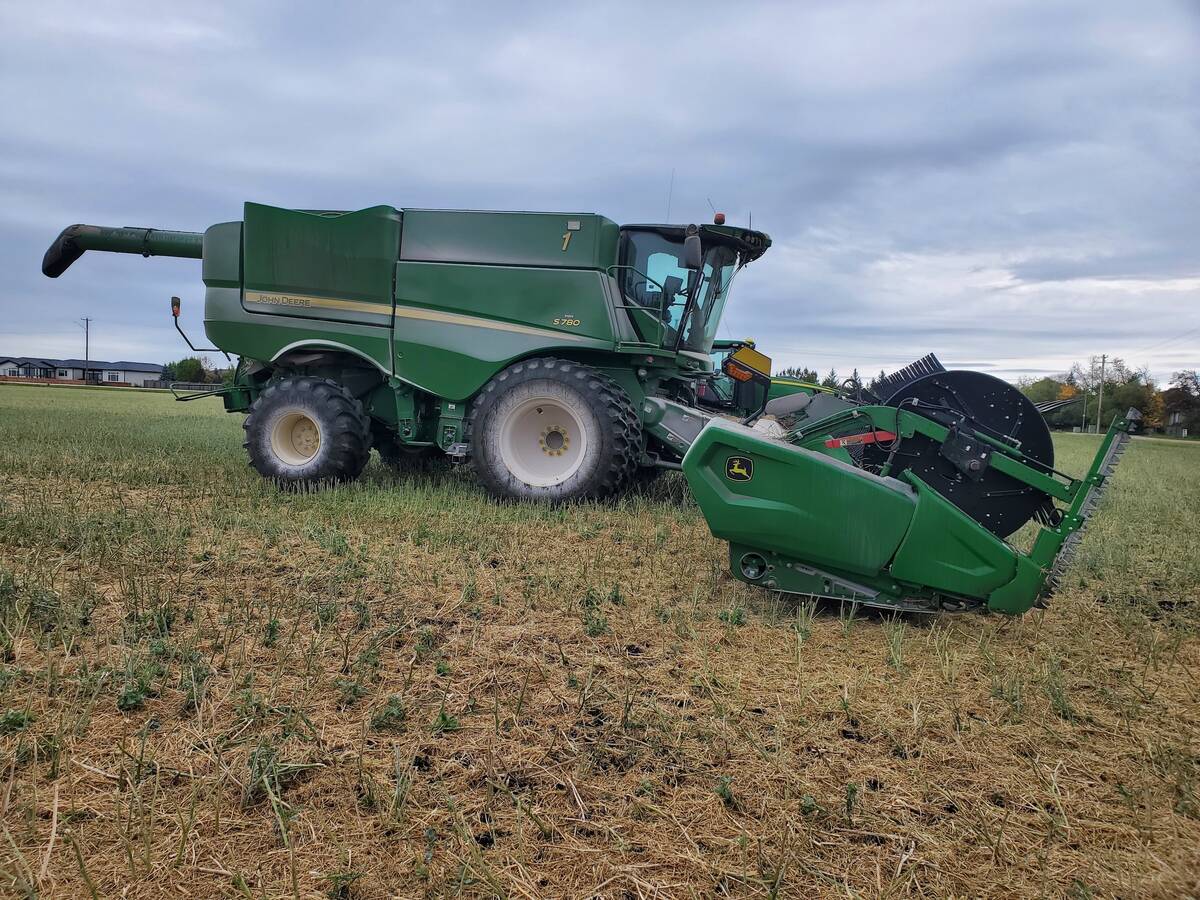Noelene McDougald had to hang up her telephone and run to save her lambs for the second time in days.She and her husband, Ray, ranch in the Cypress Hills about 10 kilometres south of Maple Creek, Sask.Typically, they face drought and heat, but not this year.“It’s like Niagara Falls,” Noelene said June 21 during a heavy thunderstorm that added to the area’s water woes.About 70 millimetres of rain fell over southwestern Saskatchewan and southeastern Alberta on June 18. The storm washed out a 75-metre section of the westbound lanes of the Trans-Canada Highway and one lane eastbound.The highway was still closed June 21 between the junction with Highway 21 that leads to Maple Creek through to Medicine Hat, Alta.Highway 271 south of Maple Creek was also closed after a bridge washed out, while Highway 41 in Alberta was closed south of Medicine Hat.Six hundred families in Medicine Hat received evacuation notices.McDougald said the water in her basement was knee-high, all of it ground water that came up through the floor.“Our freezer was floating,” she said.Her neighbour was airlifted out by helicopter while another woman who was out feeding some horses waited on the roof of her car until a boat could come for her.The McDougalds had to rescue their dogs and 160 ewes and lambs after the water rose so fast that it swamped them where they stood.Noelene said when she drove her van to get her dogs out of their pens, the water poured into her vehicle as soon as she opened the door.She moved them and returned to the sheep, trying to get them to move to higher ground.“When I let the lambs go, they’d swim like little rats back to their mothers,” she said.“I had brown sheep. It was just disgusting,” McDougald said. “I had written them off because I couldn’t get them to follow me.”The couple ended up getting an acetylene torch to cut the steel fence and drive them out.Ray said a few calves have been lost because of the wet, cold weather but none were actually swept away.Grain stored in bins is also destroyed and they found out they aren’t insured for the water damage in the basement.“Hopefully the Provincial Disaster Assistance Program will help us,” said Noelene.Premier Brad Wall toured the area June 21 and said the PDAP would be enacted. It provides money where there has been a natural disaster and the municipality is deemed eligible for assistance.The number of claims will be high this year after widespread flooding and excessive moisture destroyed roads, bridges and culverts in many Saskatchewan and Alberta municipalities. About 40 rural municipalities in Saskatchewan have declared disasters.Rick Swenson, who farms south of Moose Jaw near Baildon, Sask., woke up June 21 to find a waterfall where the municipal road below his yard should be.He said rain the night before dumped 70 mm between the hills and Highway 2 west of the farm. Even though the Swensons measured only 15 mm in their yard, all the water flowed to the Moose Jaw River behind them and cut them off from their 90 cow-calf pairs.Some of the cows are calving, and it’s now an eight-kilometre trip to get to them.Swenson said he’s only seen this much water once before.“Once, in ’74, when the huge flood hit Moose Jaw,” he said.Ray McDougald said there has never been so much water in the Cypress Hills. The last flood was in 1998 and he was told there is four times as much water as there was then.He estimated they have had about 380 mm of rain since the middle of April.Much of the prairie grain belt is coping with excess moisture and crop insurance agencies are anxiously awaiting seeded acreage reports and unseeded acreage claims due June 25.Unseeded acreage has been estimated at about 20 percent of the normally seeded area. Many fields that were seeded are now under water.Cam Swan, general manager of Saskatchewan Crop Insurance Corp., said he’s never seen a year like this.He said it’s too soon to tell how the corporation will be affected in terms of payouts but it’s likely to be a challenging year.He expects about five times more unseeded acreage claims than usual and hopes the seeded crops will rebound from their soaking.“What I don’t know is how the weather is going to play out,” he said. “Normally (crops) can’t stay under water for too long.”
Read Also

Powdery mildew can be combine fire risk
Dust from powdery mildew can cause fires in combines.

















